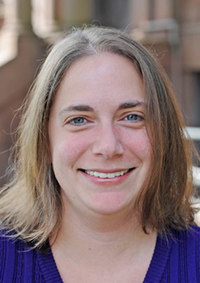Juhasz Authors Eye Movement Study on Compound-Word Processing

An article by Barbara Juhasz, associate professor of psychology, associate professor of neuroscience and behavior, has been published in the January 2018 edition of the Quarterly Journal of Experimental Psychology. The study, titled “Experience with compound words influences their processing: An eye movement investigation with English compound words” appears in Issue 71, pages 103–12.
Recording eye movements, Juhasz explains, provides information on the time-course of word recognition during reading. Eye movements also are informative for examining the processing of morphologically complex words such as compound words.
In this study, Juhasz examined the time-course of lexical and semantic variables during morphological processing. A total of 120 English compound words that varied in familiarity, age-of-acquisition, semantic transparency, lexeme meaning dominance, sensory experience rating and imageability were selected.
The impact of these variables on fixation durations was examined when length, word frequency and lexeme frequencies were controlled in a regression model. Juhasz discovered that the most robust effects were found for familiarity and age-of-acquisition, indicating that a reader’s experience with compound words significantly impacts compound recognition. These results provide insight into semantic processing of morphologically complex words during reading.
In 2003, Juhasz and her former graduate mentor, Professor Keith Rayner, co-authored a related study on “Investigating the effects of a set of intercorrelated variables on eye fixation durations in reading,” published in the Journal of Experimental Psychology: Learning, Memory and Cognition. This study examined the impact of five-word recognition variables, however focused on relatively short, morphologically simple words.
Juhasz’s new article is published in a special issue devoted to honoring Rayner, who passed away in 2015. Rayner, the Atkinson Family Distinguished Professor of Psychology at the University of California, San Diego, oversaw an Eyetracking Lab at the university.
“Keith was a very well-respected cognitive scientist who was a pioneer in using eye movements to study reading processes,” Juhasz said. “I’m honored that I could follow up on research that we worked on together more than a decade ago and have it published in this special issue.”

